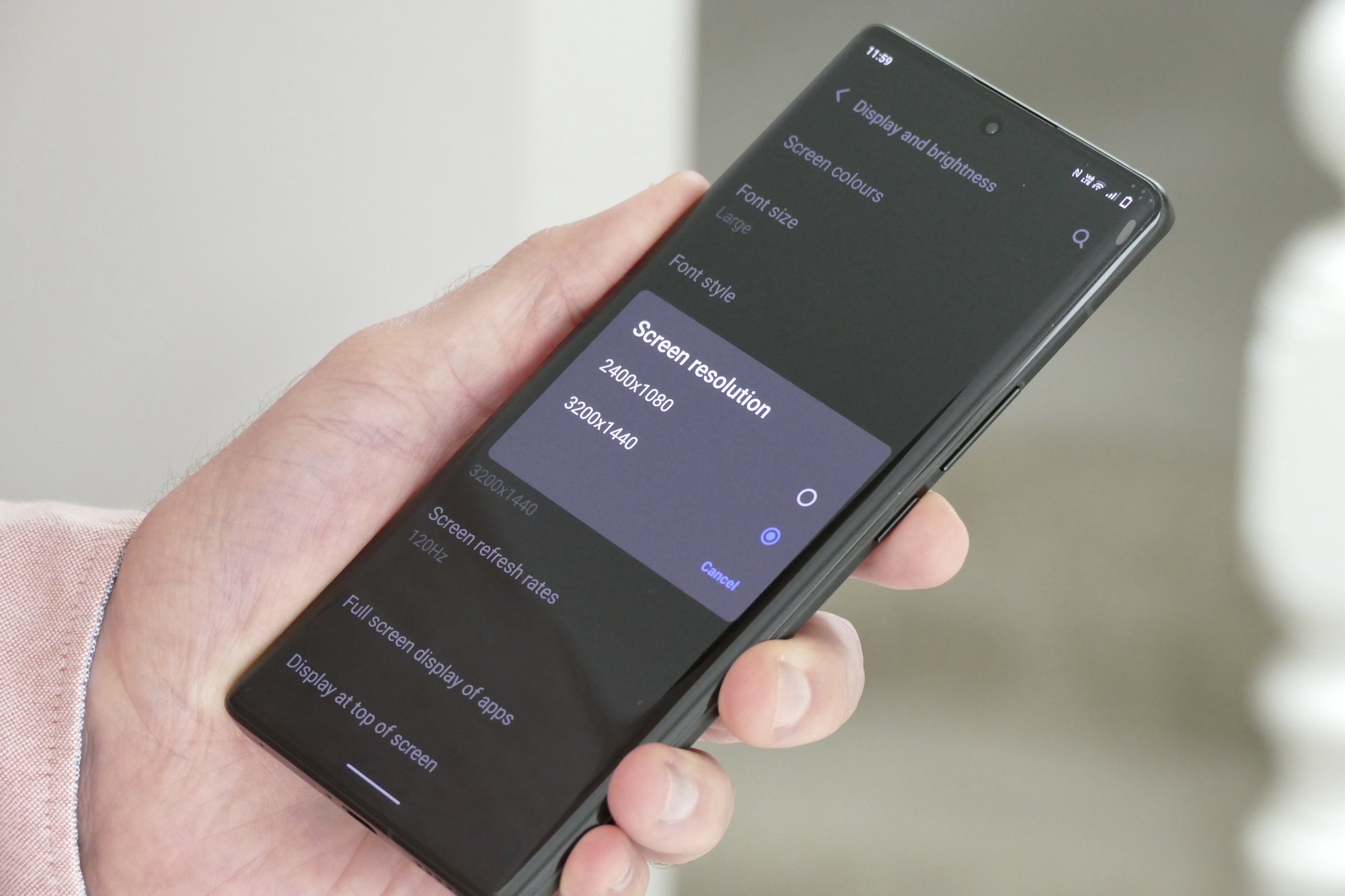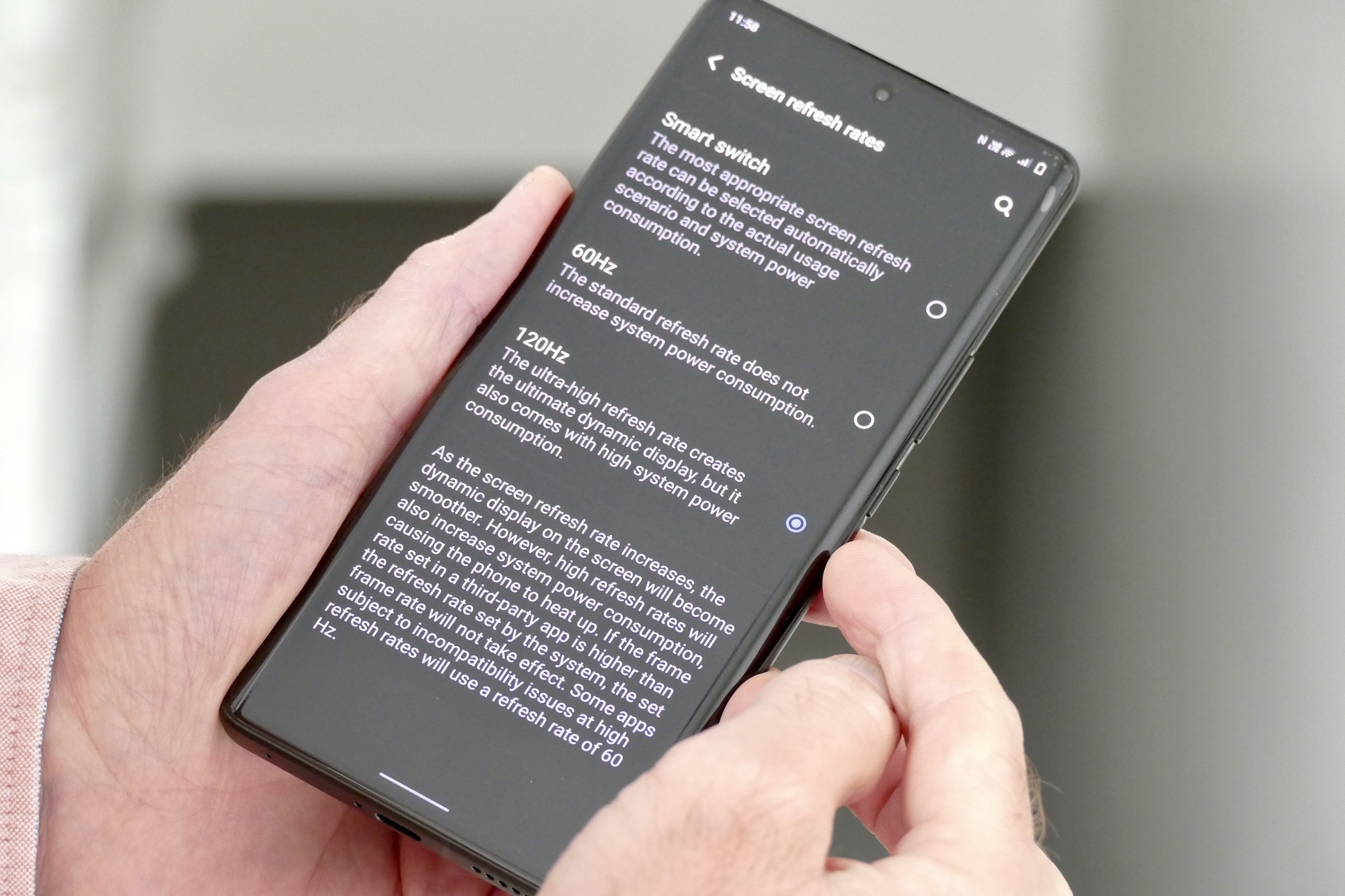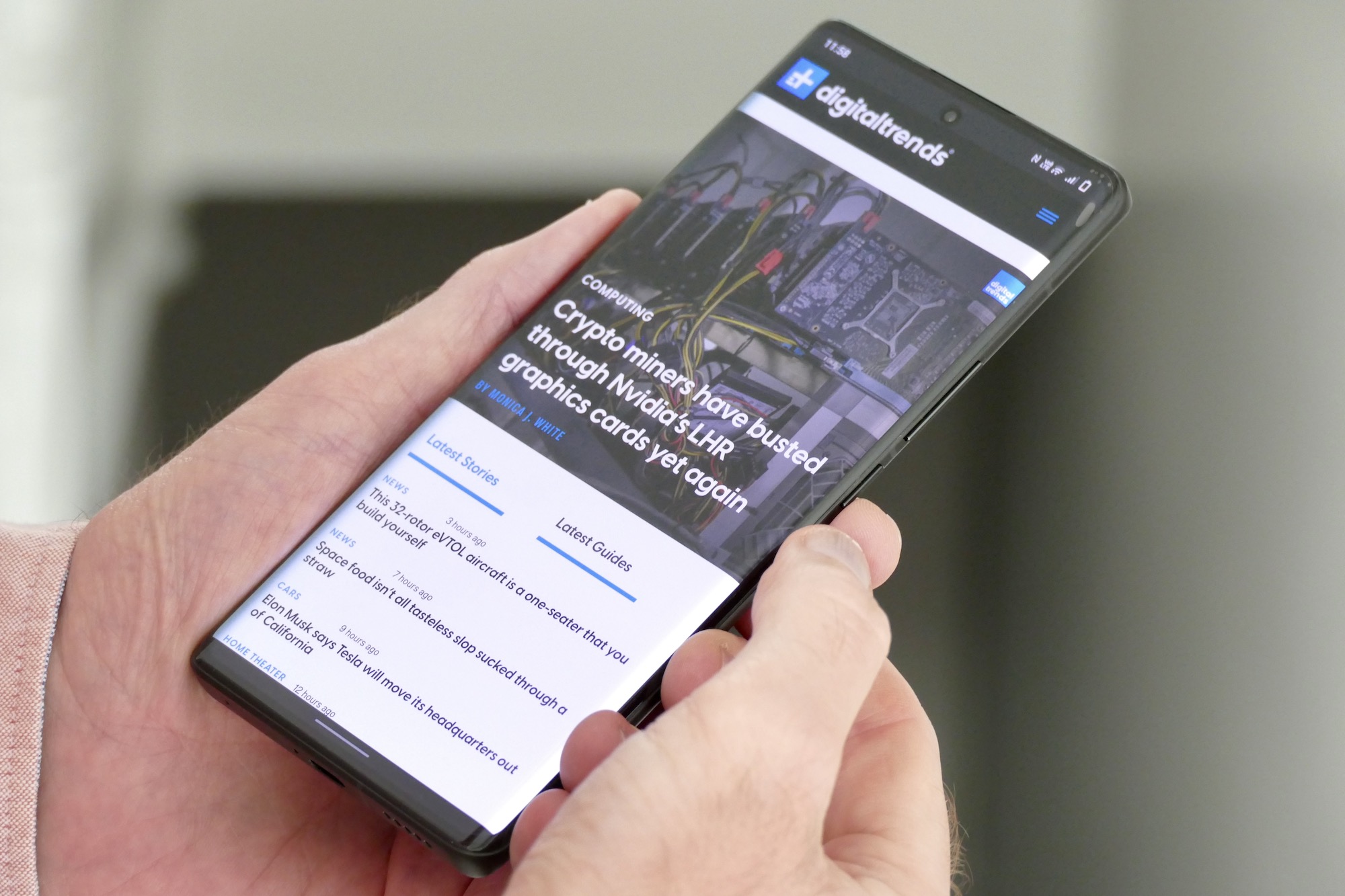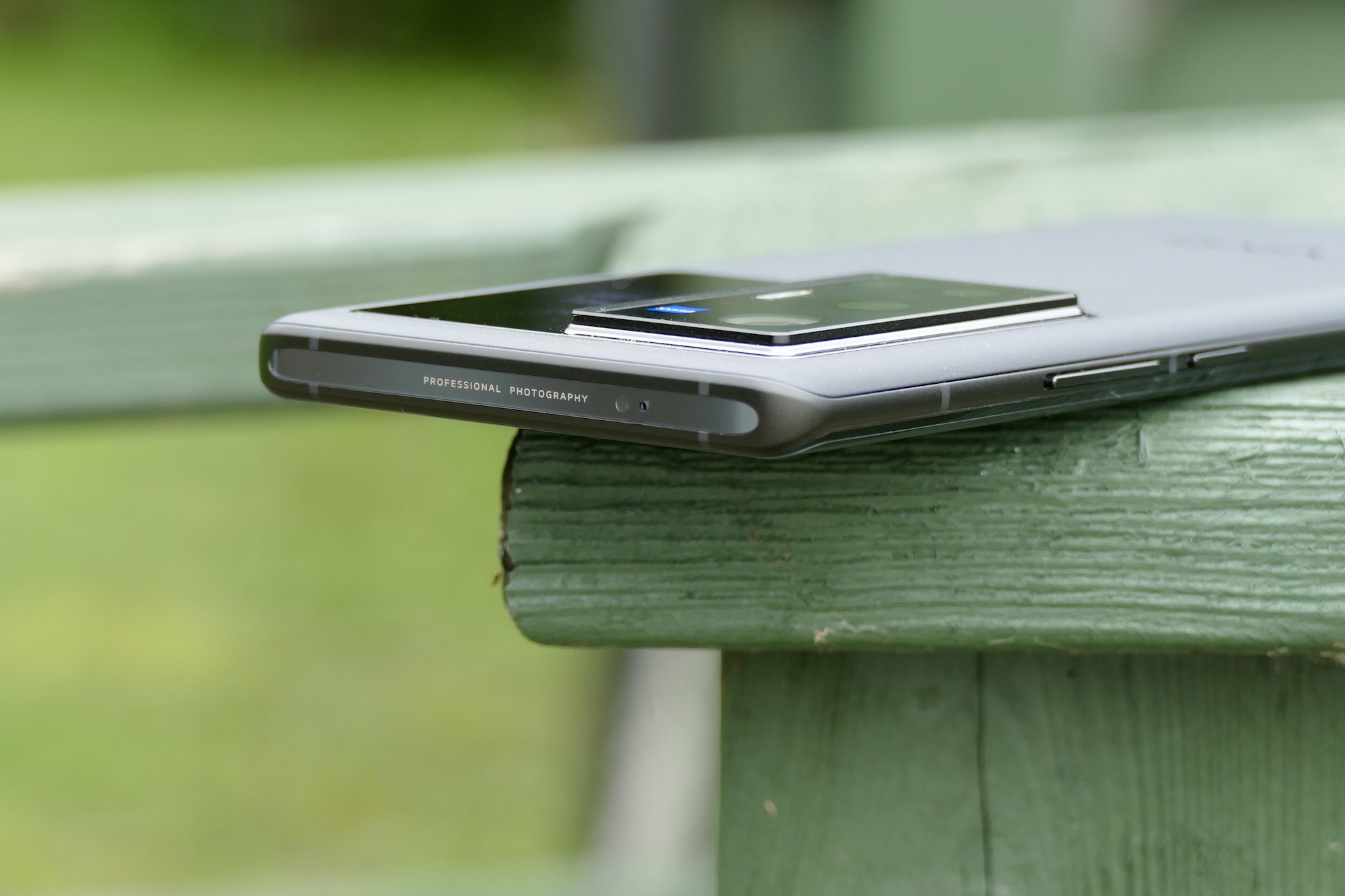“The impressive Vivo X70 Pro+ lives up to the promise of its monster spec sheet with a unique gimbal video camera and a lovely screen. It's a real shame you won't find it in your local store.”
- Beautiful 120Hz AMOLED screen
- Impressive gimbal stabilization for video
- Versatile camera zoom features
- Fastest processor available
- Large and heavy
- Software still needs polish
- You'll have to work to find one
If you’re a specification fiend and happiest when you’re comparing your smartphone with those of your friends, the Vivo X70 Pro+ is going to be a phone you’ll absolutely love. From monster camera specs to notable brand partnerships and even custom-made chips, the X70 Pro+ seems to define what most consider a flagship smartphone should be.
Buying a phone purely on what the spec sheet says isn’t a good idea though. Does everything Vivo promotes about the X70 Pro+ actually make it a good smartphone?
Design
The X70 Pro+’s back panel is made of glass with, according to Vivo, a Fluorite treatment. This means it feels nothing like glass at all, instead taking on a beautiful matte finish with a pleasing, subtle texture that helps increase grip. It doesn’t get covered in fingerprints or smudges, but my phone has collected a few scratch marks after just a week of use, suggesting it may not wear very well over time.

In your hand, this is a massive phone. At almost 9mm thick and 213 grams, it’s not for anyone who wants to use their phone with one hand very often or have it to slip unnoticed into a pocket. The tapered sides aren’t too sharp, so holding it for long periods isn’t fatiguing, but you will start to notice the weight. It’s right up there with the Samsung Galaxy S21 Ultra in terms of size and proportions.
The camera module on the back is one big rectangle, just without the design flair of the S21 Ultra’s similarly enormous module, and it sits next to a reflective section that I assume is there to help the rear camera take selfies. However, it’s more funhouse mirror than anything else, plus Vivo has slapped its branding right in the middle for maximum distraction. Don’t expect to use it for anything other than basic shot composition.

It’s not a conventionally pretty phone — there are too many rectangles on the back for that — but the matte glass finish does give it a stealthy style, and it all feels incredibly substantial and well-made. It’s a shame it doesn’t come in a color other than black, and the overall size and weight may put some people off.
Screen
Let’s do the numbers first. The AMOLED screen is 6.78-inches with a maximum 3200 x 1440 pixel resolution and a switchable refresh rate of either 60Hz or 120Hz. This gives it a pixel density of 517ppi, plus it has a peak brightness of 1500 nits and HDR10+ support, and is capable of showing a billion colors.

You have to activate the full resolution and the 120Hz refresh rate manually, but once you do, and turn the brightness up to maximum, the X70 Pro+’s screen is stunning. Menus just glide by when you scroll through them, and video looks amazing. The yellow of the Porsche 718 Cayman in this Carfection video at 2160p just pops off the screen, matched with deep blacks and delightful detail.
The same qualities are on display in the bright, colorful music video for Jo Yuri’s Glassy, which also shows off the superb stereo speakers on the X70 Pro+. There’s tons of volume and it has a lovely tone and balance. Bass isn’t strong, but this is the be expected given the size of the speakers.

I’ve had no problems viewing in sunlight due to the high brightness, but the curved sides have caused a few issues when swipe typing. Swiping words that begin with the letter P requires precise finger placement, as it’s too easy to activate the Back gesture, or to select the letter O instead. This kind of inaccuracy isn’t exclusive to the X70 Pro+, but it has been more noticeable here than on other curved screens, suggesting the software needs adjustment. I’m certainly not going to be irritated by this when the rest of the X70 Pro+’s screen and audio is so utterly wonderful.
Camera
Ready spec fiends? The X70 Pro+’s main camera has 50 megapixels, optical image stabilization (OIS) and an f/1.6 aperture, and is joined by a 48MP ultrawide camera with gimbal-controlled OIS, a 12MP 2x optical zoom telephoto camera, and an 8MP 5x optical zoom periscope camera. The latter two also have OIS. The cameras are covered in glass and partner Zeiss has provided a special coating to minimize lens flair and produce more natural colors. It’s all controlled by Vivo’s own V1 imaging chip, which is separate from the main Qualcomm processor.

That’s the hardware covered, but there are also more software modes than you’ll ever realistically need. There are four Zeiss-made bokeh modes, Night Mode, a Pro mode, A.I. scene optimization, an automatic macro mode, a Zeiss-made color optimization setting, a Super Moon mode, 8K video recording, an uncanny horizontal stabilization setting, filters, a comprehensive editing suite, and plenty more.
The unusual gimbal really works, and is unlike anything found on any other smartphone
All of this does instill the X70 Pro+ with plenty of creative fun, but a lot of the features are relatively niche. Few people have an 8K television to enjoy 8K videos shot on the phone for example, but not everything falls into this category. The unusual gimbal really works, and is unlike anything found on any other smartphone. It stabilizes video to the point where you wonder if it’s actually playing. Perhaps the only downside is you’re limited to 1080p, but it doesn’t really matter when the results are this impressive.
https://twitter.com/AndyBoxall/status/1446127505937625107
Out taking photos with the X70 Pro+ reveals it’s extremely capable. The two optical zoom cameras give it incredible versatility, the massive main sensor — a Samsung ISOCELL GN1 — adds plenty of natural bokeh, and the HDR is highly effective. Negatives? It’s not a fan of focusing on objects close up when the macro mode isn’t active, due to that large sensor, and it does oversaturate color levels in some situations. It’s also a little inconsistent, and generally will benefit from Vivo tweaking the software more, as photos aren’t always very natural or representative of what you see on the screen or in real life.
Vivo made a big deal about the Zeiss bokeh modes, so what are they like? They’re dramatic. There are four in total, each giving a different look to the background blur based on Zeiss camera lenses. Brighter and noticeably more blurry (in a good way) than standard portrait mode shots, the photos do still suffer from edge recognition issues, which is often more noticeable in the Zeiss artificially enhanced shots. But if you play around for long enough, you can get some very pretty selfies using the mirrored section on the back of the phone.
The X70 Pro+’s camera is impressive. It delivers the promise the Xiaomi Mi 11 Ultra couldn’t quite manage, and the sheer range of features and modes make it a strong alternative to the excellent Galaxy S21 Ultra, although the final images do still need some optimization before the results can take on the S21 Ultra.
Software and performance
Android 11 is installed with Vivo’s FunTouchOS 12 over the top. It’s similar to Oppo’s ColorOS in that it looks quite different from Android on a Pixel phone, with more customized icons and menus, many pre-installed apps. and its own way of doing things. It has been reliable, it’s fast, and once you spend time getting the look and style right, it’s pretty, too.

However, it still has its frustrations. The always-on screen is a good example. You turn it on, but the default setting is to only show the always-on display for a short time before it disappears. To actually make it stay on, as you asked, you have to dig further into the settings. Even then, you find out not all display options show notifications. It’s inevitably a battery-saving thing, but it’s very annoying. It’s this kind of thing you find throughout, such as the screen resolution being set to a lower pixel count out of the box, too.
All my usual apps installed except for the Amazon Shopping app for some reason, and notifications can be interacted with on the lock screen, but I did find Google Discover would crash and throw me back to the home screen sometimes. FunTouchOS 12 adds widgets that are attractive and quite useful. I especially like the weather widget with its scrollable daily forecast, and the Apple Music widget. Released for the first time on the X70 range, I’ve felt more at home with FunTouchOS 12 than with any version before it, which is excellent news.
It seems like I haven’t mentioned some numbers for a bit, so let’s change that. Inside is a Qualcomm Snapdragon 888+ processor with a 5G modem and the option of either 8GB or 12GB of RAM and 256GB or 512GB storage space. There’s Bluetooth 5.2 with AptX Adaptive for audio and NFC for Google Pay. The fingerprint sensor under the screen is very fast, but it’s usually beaten by the even faster face unlock system.
Unsurprisingly given the processor inside, the X70 Pro Plus has no issues with performance. I played Genshin Impact and Asphalt 9: Legends and it shrugged off both, even with the settings all turned up using the phone’s Game Mode.
Battery
I’ve used the X70 Pro+ on its default settings for a week, which means a resolution of 2400 x 1080 and the automatically switching refresh rate. It has easily lasted two full days on a single charge. Activate the full resolution and turn the refresh rate up to 120Hz, then add in an hour of games and other general use, and the battery was at about 20% by the end of the day.
Charging comes through a 55-watt wired charger that’s is included in the box, along with wireless charging at up to 50W. In 20 minutes, it added around 60% charge to the 4,500mAh battery, and it reached 100% capacity in about 50 minutes.
Price and availability
Don’t go looking for the Vivo X70 Pro+ in any U.S. stores, as it likely won’t ever get an official release. You can import one, though. It will be available starting October 12 in China, India, Taiwan, and several other regions, before arriving in the Middle East and parts of Asia-Pacific later. We’re hoping a European and U.K. launch will also come.
Expect to pay around $1,060 for the 12GB/256GB version. If you do plan to import, it’s wise to make sure the phone is the “Global” version, as the Chinese version runs the China-only OriginOS software rather than FunTouchOS.
Our take
The Vivo X70 Pro+ is the best Vivo phone I’ve used yet. It’s well-made and durable, and it has a beautiful screen, a feature-packed camera, performance to spare, and, for the first time, software I can live with on a daily basis without getting annoyed or too frustrated. It’s not perfect, but FunTouchOS 12 now holds its own next to Oppo’s ColorOS and Realme’s RealmeOS.
The gimbal camera remains unique and the stabilization works very well, adding real benefit to the phone. The other features sometimes border on the gimmicky, but the two optical zoom levels don’t, helping make the X70 Pro Plus’s camera very versatile and fun to use, while its overall ability is a couple of software updates away from really keeping pace with the very best camera phones out there.
Is it more than a mega spec sheet? Yes, the specs do translate into a great phone and camera experience, but there is still room to improve the photos and the software. At this time, I’d usually be ready to recommend the phone, but I can’t do so as the X70 Pro+ hasn’t been given a wider release yet, so you’ll have to really work to get one in the U.S. It’s a shame, as it has the potential to be a breakthrough device for Vivo in regions where the brand is not well-known.
Is there a better alternative?
Yes. The Vivo X70 Pro+ is an immensely capable smartphone, but it’s hard to get if you’re in the U.S. or the U.K.. Instead, we recommend you choose the Samsung Galaxy S21 Ultra, or the Apple iPhone 13 Pro or Pro Max, assuming you want a large screen and a great camera. Both deliver this, and have plenty of performance and ability.
How long will it last?
The Vivo X70 Pro+ is made from metal and glass and is quite heavy, so we do recommend putting it in a case for protection, and a surprisingly nice one is included in the box. The phone also has an IP68 water-resistance rating, so it will survive being underwater for up to 30 minutes down to a depth of about 1.5 meters.
Vivo’s software update policy covers the X70 Pro+ for three years, which includes major system versions and security patches. The phone’s specification is high and the Snapdragon 888+ processor is the fastest available at the moment. It will last three years without a problem.
Should you buy it?
No. It’s good, but if you live in the U.S., the process of importing the Vivo X70 Pro+ is a pain, so it’s best to buy a locally available flagship phone. However, the phone is very impressive and certainly the best Vivo phone I’ve used, so if you are happy to import, or can buy one where you live, you won’t be disappointed.



























